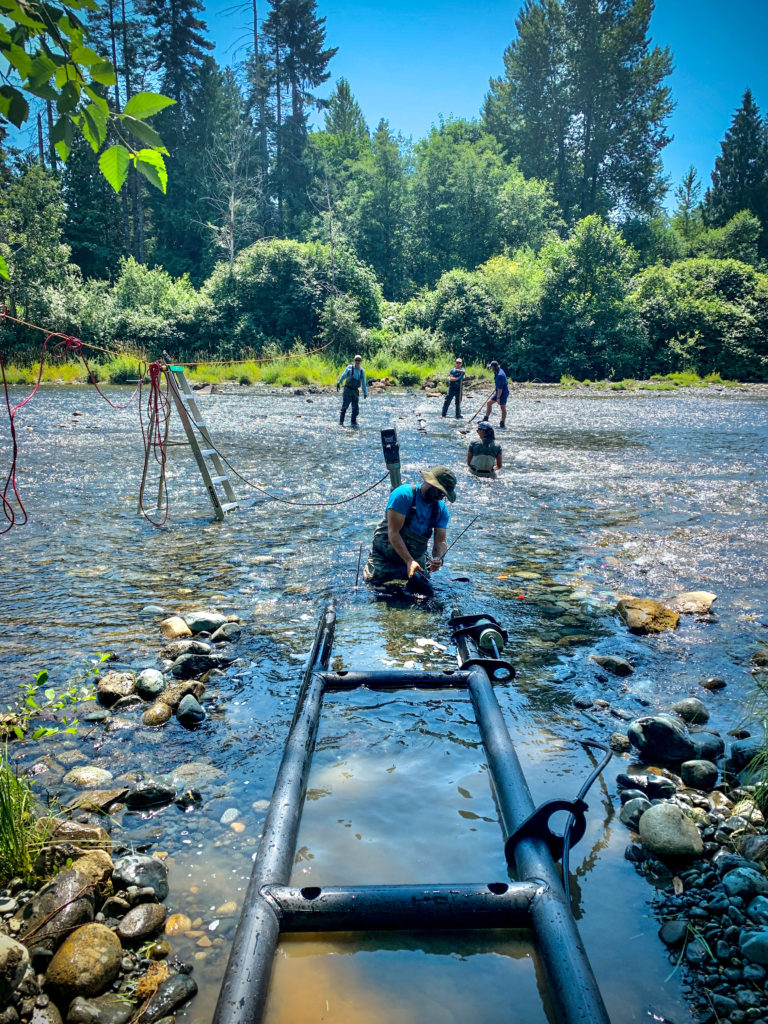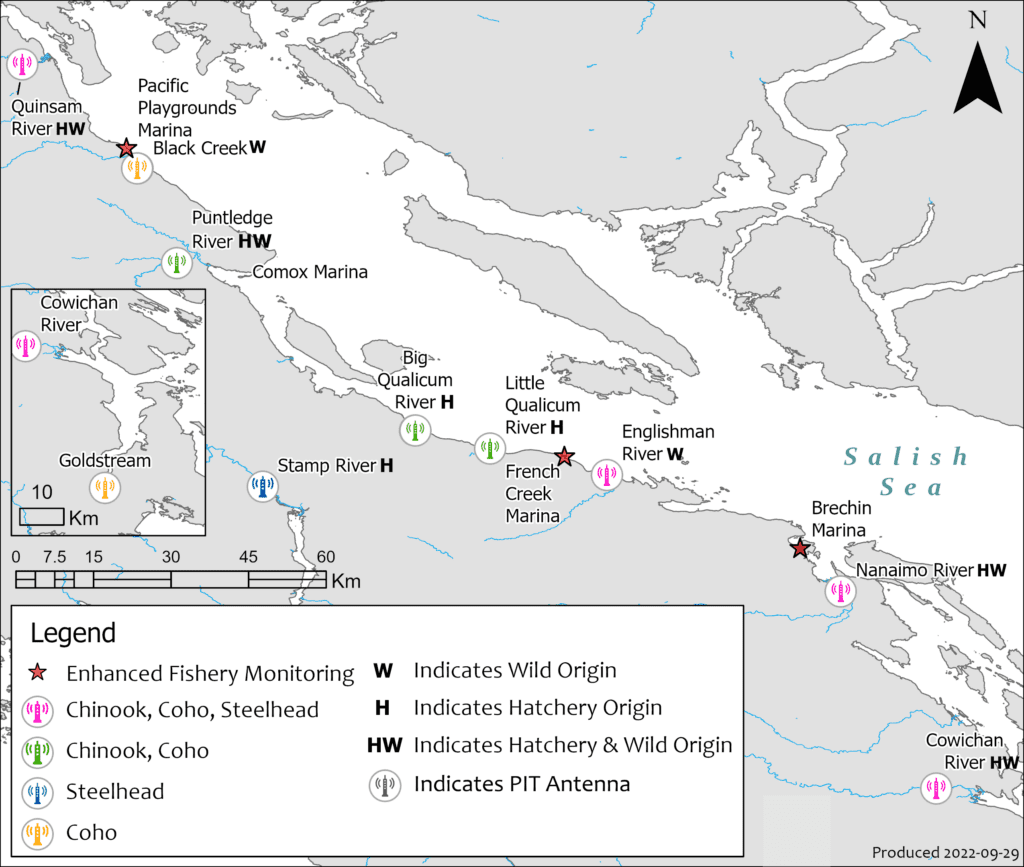
Implementation of PIT infrastructure at hatcheries provides an innovative means of monitoring and evaluating experimental rearing and release strategies, hatchery-wild interactions, and future research opportunities at these enhancement facilities. To maximize this infrastructure investment, an ongoing PIT tagging program that aims to tag over 50,000 wild and hatchery juvenile Chinook, coho, and steelhead throughout the Salish Sea region each year for the duration of the project. Tagging will take place at hatchery facilities; in rivers and estuaries targeting wild fish; and in the marine environment for both hatchery and wild fish via capture by micro-trolling – a modified method of recreational fishing that utilizes miniature trolling gear (hooks, spoons, flashers) to target juvenile salmon. Data from this extensive PIT program will help elucidate key survival bottlenecks in both freshwater and early marine environments for Chinook, coho, and steelhead, and will be used to develop strategies that may help improve survival.
For the latest updates, see the survival bottlenecks news page.
Team installing PIT antenna array, photo credit: D. Swainson.
